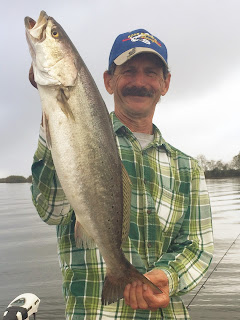Treetop Basics
Fishing treetops seems like an easy technique. Find a lay-down, toss the bait closeby and hope for a bite. But many fishers overlook or don't realize what they may be missing. Some lay-downs are visible and easy to navigate the structure and others may not be so obvious. So what should you look for when fishing these structures? One, if you only can see the trunk of the tree, notice the direction in which it is lying. If it is a new fallen tree, there will be lots of cover that that may not be visible and may be holding fish. Working from the outside to the inside is always the best approach. The reason for this, is not to spook the fish that may be hanging around the outer part of the tree. I see a lot of fishers fishing what they can see and their boat may be sitting on top of perhaps the best part to fish.
Of course modern day electronics have taken the guess work out of where fish may be hiding. But for many who do not have or can't afford such high-tech devices, your technique is crucial. Starting on the outer end of the treetop and fishing different depths may prove to be beneficial. This can be done by tightlining a jig or live bait, or you can also use a float or slip cork. After fishing the outer perimeter, move into the middle branches. This can be frustrating at times, because of the many branches that you may hang up on. There is an old saying "if your not getting hung, you're not fishing where the fish are." So don't be afraid to fish in tight cover.
The right jigging pole is needed for this. Many fishers chose a 10 or 11 ft jigging pole. These are typically lighter than the longer 12-14ft poles and are great for fishing tops. It is easier to place your bait in those tight spots and if you do get hung, you can simply punch out your jig. This is never recommended by jig pole manufacturers, but it saves you from losing a lot of jigs. When fishing tight cover you can also go to a heavier line. This allows you to pull the bait loose. Using a light wire hook is always best. They tend to bend out easier. Plus, using a heavier line in the 10 to 14 lb class helps to pull those big fish from heavier cover. Some fishers prefer braid and some prefer monofilament. When using monofilament, an XT line is recommended. It is more abrasive resistant and may mean the difference from landing that trophy or breaking off and watching it swim away.
You never know on which part of a structure fish may be located. Fishing all parts might boat you more fish. It only takes one spot to save your day. It could mean going home empty handed or loading the ice chest. So the next time you are fishing treetops, just imagine which part may hold those big crappie. Hit every part...... seen or unseen. Start from the outside to inside and have fun pulling out those slabs.
Good luck fishing. Hope to see ya on the water.





Great Tips partner. Tight lines to ya!!!
ReplyDelete